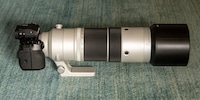

Canon 200-800mm: good idea, well realised
Reduced speed, but light and affordable: that is the idea behind the Canon RF 200-800mm super telephoto lens. It follows this path less radically than the older 800mm - and is better in almost every respect.
Super telephoto lenses are large, heavy and expensive. Especially if you want them to be fast. For amateur photographers, such monsters are hardly an option.
Canon already proved in 2020 that there is another way. With two amazingly light and affordable superteles. The focal length of 800 millimetres is particularly interesting, as it can also be used to photograph small birds. Disadvantage: The speed of f/11 is modest. Many people cringe at this value. However, I can say from experience that it works surprisingly well.
Since the beginning of 2024, the Canon RF 200-800mm has been available as an alternative. Unfortunately, it was hardly available for months - that's why I'm only testing it now. The RF 200-800mm is a little faster, but also heavier and more expensive than the fixed focal length. Compared to the professional lenses, however, it is still very light and affordable.
In this test, I explore the question of whether the extra cost of the RF 200-800mm is worth it - and if so, for whom. I will abbreviate the two lenses below with the designations "200-800mm" and "800mm".
Size and weight: still portable
The 200-800mm weighs almost exactly two kilograms. I clearly notice the difference to the 800mm with its 1260 grams. Nevertheless, I can still use the 200-800mm hands-free. It gets a bit tiring in the long run, but it works. The weight is comparable to that of Sony's 200-600mm.
How important the weight is depends on the use. If you're photographing a motorbike race, for example, you know exactly where the subject will appear. A tripod can then be used without any problems. In wildlife photography, you can also do this under certain circumstances, but then you need a lot of patience, time and experience. It's nothing for me, I have to be able to move freely.
In terms of size, there are no significant differences between the two lenses. Both fit easily into an average rucksack. But both are longer in use. The 800mm F11 must be extended before each use. And the 200-800mm lengthens with the focal length. This is in contrast to the Sony 200-600mm, which does not lengthen when zoomed. At 800 millimetres, it is slightly larger than its cheaper alternative, even in transport mode.
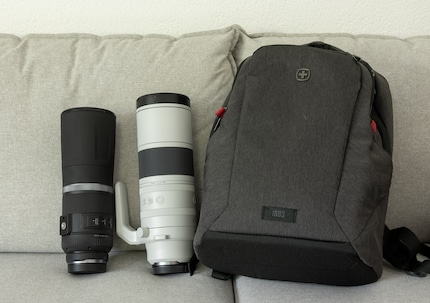
Source: David Lee
It is also a little annoying during transport that the tripod clamp cannot be removed. The 800mm has no tripod clamp at all. This means I can't take tripod shots in portrait format, which I've never missed so far.
The speed: insignificant advantage
In principle, high speed is an advantage with superteles for two reasons:
- The exposure times usually have to be kept very short, which pushes up the ISO values. With a high light intensity, the ISO values remain within reasonable limits - and thus also the image noise.
- The background becomes more blurred and therefore less distracting, the subject stands out more clearly.
That's why it's basically good that you get a little more speed with the 200-800mm. However, the difference between f/9 and f/11 is really small. It corresponds to two thirds of a f-stop. So if you need 4000 ISO at f/11, you need 2500 ISO at f/9. The difference in quality is not too big, nor is the difference in the background.
By the way, the automatic system very often does not set to f/9, but to f/10 - perhaps because the image becomes a little sharper by stopping down. This makes the difference even smaller. With the 800mm, the aperture is fixed and therefore always remains at f/11.
At 600 millimetres, the aperture is f/8, meaning that the Canon lens loses the direct comparison with the Sony 200-600mm, which achieves f/6.3 at the same focal length. But here too, the difference is not great in practice. What's more, if you want 800 millimetres with the Sony lens, you need a teleconverter, which means you lose the advantage in terms of speed. What's more, such teleconverters are expensive.
For bird photography, 200 millimetres more focal length is more important than a little more speed. Here is an example. Here I have zoomed in to 800 millimetres. With an APS-C camera - this image section would require 1200 millimetres in full format. Even that is still too little for a small bird or for an image section that only shows the heron's head and its prey. The automatic system has stopped down to f/10 here, but the background is still blurred enough. The sensitivity is 2000 ISO. I used Lightroom's AI noise reduction to make the noise disappear.
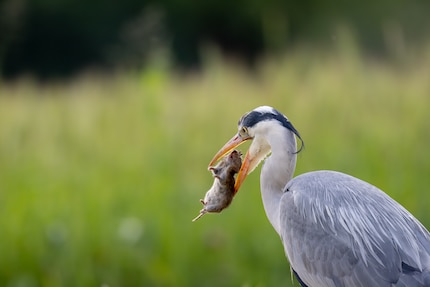
Source: David Lee
Autofocus: clear advantage for the 200-800mm
The focus motor of the 800mm is really fast. I can even cope with it in bird photography. It also works almost silently. However, the 200-800mm goes one better and covers the same focus distance noticeably faster.
Note that the performance strongly depends on the camera and the situation. My Canon EOS R7 is not top class. In general, however, the focus systems of today's cameras are so good that they cannot be held back by the low speed of the two lenses.
In the video above you can see a large square on the cheaper of the two Super-Teles. This is the focus area. If an animal or its eye is outside of this square, it cannot be focussed. This special feature of the low-cost lens is a clear disadvantage, especially in wildlife photography where movements are often unpredictable.
On a camera with a smaller APS-C sensor, the problem is less serious than with a full-frame camera. As you can see in the video, the square covers a large part of the viewfinder image. On a full-frame camera like the EOS R5, on the other hand, the focusable area is significantly smaller.
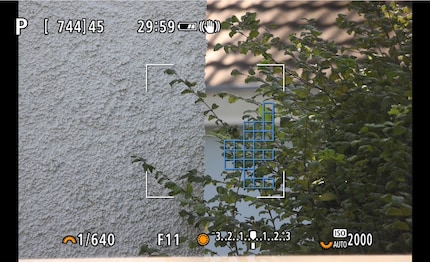
Source: David Lee
The 200-800mm is more versatile
The advantage is clear from the name of the lens: the 200-800mm is a zoom lens and is therefore more versatile than the 800mm fixed focal length. Put simply, you can use it to photograph not only tits, but also swans.
Almost more important to me is the much shorter focusing distance. At 200 millimetres I can focus on everything from a distance of 80 cm, at 800 millimetres everything from 3.3 metres. With the 800mm F11 I need a distance of at least 6 metres. That's so much that a bird the size of a sparrow doesn't even fill the entire image with APS-C.
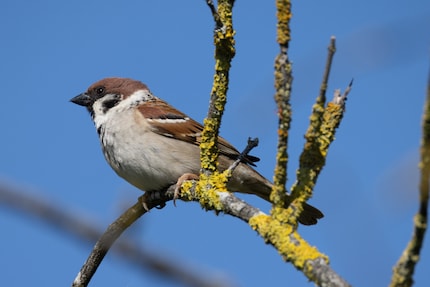
Source: David Lee
Image stabiliser: theoretically better, feels the same
On paper, the 200-800mm lens stabilises better. It is said to compensate for up to 5.5 stops of exposure, while the 800mm F11 only compensates for 4 stops. In both cases, it doesn't matter whether the camera also has an image stabiliser or not.
I don't notice any difference in everyday life. My hand is probably steadier with the lighter lens, so the lower performance of the stabiliser compensates for this. In any case, I don't find the exact value of the stabilisation so important with superteles. I only need the image stabiliser to keep the subject better in the viewfinder. For the photo, the shutter speeds are so fast that I don't need a stabiliser. Smooth freehand videos are impossible with a focal length of 800 millimetres anyway.
Image quality: both are okay
First a small disclaimer: I can't fully test the image quality with my Canon EOS R7 APS-C camera. This is because the R7's sensor only shows part of the image circle that the lens could expose. I therefore don't know how the lenses perform at the edge of the image on a full-frame camera.
I have never noticed any weakness in the optics of the 800mm F11. However, when I photograph an even surface for testing, I notice a slight vignetting with the 800mm lens. I see nothing with the 200-800mm. Both lenses show only minimal distortion. Both can be easily corrected using software.
The 200-800mm seems a tick sharper to me. Even with the not quite perfect sensitivity of 800 ISO as in the example below.
In a nutshell
Price, performance and weight in good balance
The Canon 200-800mm is ideal for lightweight bird photography. However, thanks to its versatility, it can also be used for other purposes. The speed is average, but you get an extremely long focal length at a moderate price and with an acceptable weight. With its two kilograms, the lens can be used freehand without any problems - which is not a matter of course with this focal length.
The autofocus is very fast and quiet, and the image quality is flawless. There are only a few small things to criticise: The tripod collar cannot be removed and the lens lengthens when zooming - unlike the otherwise similar Sony 200-600mm.
In comparison with the Canon 800mm F11, this lens is more expensive and heavier, but otherwise better across the board. The speed is still the smallest advantage. Much more important is the much shorter minimum distance and the fact that the autofocus is not restricted to the centre of the image. These two points are particularly important on a full-frame camera. There I would clearly prefer the 200-800mm. With an APS-C camera such as the Canon EOS R7, the more favourable 800mm F11 also has its justification.
Pro
- Good compromise between weight, price and light intensity
- Short close focusing distance
- Fast autofocus
- Picture quality
Contra
- Tripod clamp not removable
- Extension when zooming
My interest in IT and writing landed me in tech journalism early on (2000). I want to know how we can use technology without being used. Outside of the office, I’m a keen musician who makes up for lacking talent with excessive enthusiasm.

